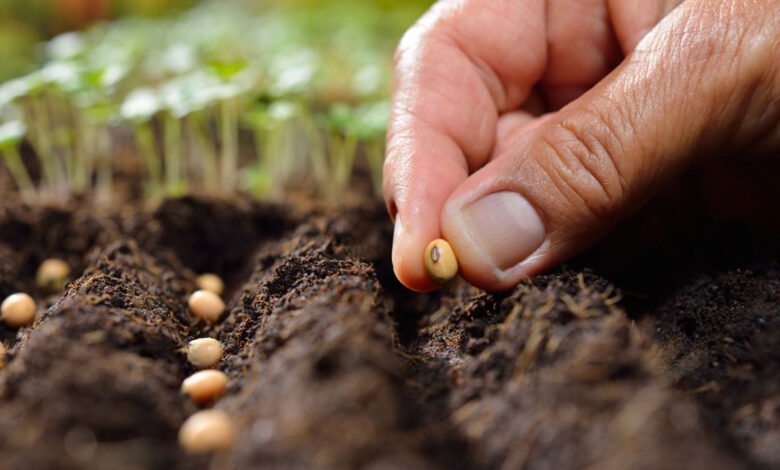Tapping into the ‘Vegetable Seed’ market in India

The Indian seed market is projected to record a CAGR of 6.8 percent during the forecast period 2022-2027.
According to the Food and Agriculture Organization, vegetable production in the country increased from 131.6 million ton in 2017 to 132 million ton in 2019 as a result of increased domestic demand for vegetables in line with the consumption of various crops such as potato, onion, and cabbage, which increased by 18 percent, 16.3 percent, and 6 percent, respectively, from 2016-2020.
Moreover, the area harvested under vegetables of primary importance reduced from 8.8 million hectares in 2017 to 8.4 million hectares in 2019. However, the vegetable yield showed a significant increase from 149,217 hg/ha in 2017 to 155,623 hg/ha in 2019.
According to the Indian Council of Agricultural Research (ICAR), increasing awareness regarding the consumption of vegetables to meet various dietary requirements and nutritional needs has raised the demand for vegetables, consequently leading to an increase in the area of vegetable production. On the supply side, farmers are growing a wide range of vegetables since vegetables are short-duration crops that have multiple harvests, resulting in a better cash flow for farmers.
Major vegetable-producing states in India are Bengal, Uttar Pradesh, Madhya Pradesh, Bihar, Gujarat, Chhattisgarh, Maharashtra, and Haryana. India is the largest producer of potato, onion, tomato, okra, eggplant, cabbage, and cauliflower, among vegetables, and ranks second in the production of potatoes, onions, cauliflowers, brinjal, cabbages, etc.
Substantial increases in productivity can thus be achieved even with diminishing land and water resources enabling the use of better and quality seeds equipped with better traits under superior crop agronomy in the country. With intensive cultivation using hybrids, India’s average yields under open field conditions have been steadily increasing.
The need for producing more from the decreasing per capita arable land to get higher returns can be possible with the use of High Yielding Varieties (HYVs) and hybrid varieties. This trend is encouraging farmers to shift their focus from conventional seed sources to packaged seeds that promise better returns. Therefore, the increased production of vegetables and the decreasing area harvested for vegetables in the country have resulted in the growing demand for quality seeds, which is anticipated to bolster the market growth during the forecast period.
According to the Mordor Intelligence report under the row crop segment of the market studied, cotton holds the maximum revenue share. This is primarily due to the large-scale adoption of BT cotton seeds in India. Cotton is an important part of the Indian economy, as this crop forms the backbone of the Indian textile industry.
India is one of the major producers of cotton in the world, with a production of 18530 million ton in 2017 as per FAO. India also exports a major share of cotton to other countries.
In 2018, cotton exports were valued at USD 1.2 million, with Sudan, Myanmar, Eswatini, Ethiopia, and Hong Kong as the major importing countries. Gujarat is one of the major cotton-producing states in the country. Cotton seeds are also used in the vanaspati or vegetable oil industry and in fodder for milch cattle to enhance milk production, thus keeping the demand for the crop high during the review period. With more countries opening up for GM cultivation, there is a huge potential to export cotton seeds from India.
As highlighted in the report, the COVID-19 pandemic affected the seed industry, with the availability of quality seeds being the greatest challenge for farmers. The pandemic and the restrictions imposed by governments restricted the production, certification, and international trade of seeds, with serious consequences for farmers. Despite the various restrictions in the turnover of the seeds industry for 2021, vegetable seeds contributed the most with a 30 percent share, followed by cotton with about 18 percent, maize with 13 percent, and paddy with 10 percent.
There has been an increase in hybrid seed penetration in multiple crops in order to address the increasing food demand-supply gap in the country. Due to stagnant growth observed in the arable land and a constantly growing population, the per capita arable land has been declining. These factors, along with poor crop productivity, are likely to lead to pressure on the food supply in the country.
In India, hybrid seed penetration is high in cotton (90 percent), corn (60 percent), limited cereals, such as sorghum and pearl millet, and oilseeds, such as sunflower (hybridization 80 percent). However, penetration is still very low in major cereals, such as paddy and wheat (5 percent). Cotton hybridization is almost reaching saturation, as BT cotton is sown in over 90 percent of the cotton-producing area in the country. Hybridization in corn, paddy, and vegetables is estimated to drive the sector’s growth during the forecast period.
The patenting process in India is not very vigorous, enabling companies to replicate better-performing seeds in the marketplace. In addition, after the discovery of a successful hybrid, seed multiplication needs many rounds of sowing. Therefore, the increasing government initiatives and investments by players are expected to drive the market in the country during the forecast period.




